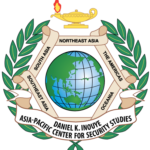By Kumar Ramakrishna [*]
Abstract
Violent Islamist extremism remained the most potent terrorist threat to global stability in 2020 and will remain so in 2021. Six trends were observed the past year: the continuing salience of lone actors; the involvement of women and family networks in combatant roles; the challenge of rehabilitating and reintegrating returning foreign fighters and their families; the role of diasporas; the diversity of terror financing mechanism and ideological ecosystems propagating violent Islamist perspectives. Going forward, while a range of customized short-term counter-terrorist kinetic and coercive measures remain important to deal with the evolving physical threat of violent Islamist extremism, these should be complemented by softer medium to longer-term counter-terrorism approaches, to deal with the underlying political, socioeconomic and ideological factors that generate the threat in the first place. Importantly, a more granular understanding of the ideological ecosystems that propagate the Islamist extremism that sustain terrorist and support networks, would be salutary.
The year 2020 will undoubtedly be remembered as the year of the COVID-19 pandemic. As of January 26, 2021, with more than 100 million cases and over two million deaths worldwide, the struggle against COVID-19 is likely the defining struggle of this generation. Against this backdrop – despite the alarming rise of extremist violence, as exemplified by the January 6, 2021 mob assault on the US Capitol building in an ultimately futile attempt to prevent Congress from certifying Democratic President Joe Biden’s November 2020 victory over Republican Donald Trump – the strategic challenge of countering and preventing transnational Islamist terrorism and extremism is likely to remain the most potent terrorist threat to global stability in the new year. Despite the military demise of its so-called territorial caliphate carved out of Iraq and Syria in March 2019, the Islamic State (IS) managed to remain resilient and active both on the ground and online.
IS has re-envisioned the caliphate as an overarching global state rather than one territorially confined to Iraq and Syria. It reframed the inclement strategic situation it faced in 2020 as a “protracted resistance” strategy and its military setbacks as temporary. As far as the estranged ideological cousin of IS, Al-Qaeda was concerned, the year proved particularly traumatic, given the loss of several senior leaders. Rather than tight strategic control, both IS and Al-Qaeda sought through social media to provide a broad strategic narrative to guide the actions of a widely scattered global network of affiliates. This narrative remained centered on three core themes, adapted to diverse local contexts worldwide: armed struggle to establish the caliphate; hatred of the non-Muslim Other and the End Times.
Six Global Islamist Extremist Trends Likely to Persist in 2021
Globally, the violent Islamist threat was characterized by six broad trends in 2020, which are likely to persist this year.
First, the threat of attacks by lone actors inspired if not necessarily directed by IS, Al Qaeda or their affiliates online, remained pertinent. In Indonesia, “stabbings were the most preferred tactic, followed by shootings and bombings” by both “pro-IS groups” and “individuals in Indonesia”, reflecting a “continued preference to execute attacks that require little training, planning or funds”. A second trend was the increasing involvement of women, youth and family networks in active combatant rather than simply support roles. In October 2020, a young Indonesian woman was arrested in Jolo island in the southern Philippines for involvement in a suicide bombing plot. She was later identified as the widow of a slain Indonesian terrorist. She was also the daughter of an Indonesian husband-and-wife suicide attack team that had bombed a church, also in Jolo, in January 2019, killing at least 23 civilians.
A third trend was the challenge of dealing with returning foreign fighters and their families humanely without compromising national security. For example, it was reported that more than 50 Malaysians could be returning home from Syria, prompting discussions about how to properly rehabilitate and reintegrate them, as some returnees were “expected to include battle-hardened jihadists”. In Central Asia, owing to the global pandemic, repatriation of nationals from Syria slowed down significantly in 2020. Authorities there acknowledged that “transforming the extreme beliefs of some ideologically hardened repatriates has been notoriously slow”. The Maldives, which contributed the greatest number of IS fighters per capita to the Syrian civil war, recognized that its “returning terrorist fighters could pose a grave internal threat” in the near future.
The role of diasporas was a fourth notable trend. At least 1.1 million Rohingyas refugees who fled persecution in Myanmar remain in Bangladeshi camps, vulnerable to exploitation by both criminal and terror networks – like the Arakan Rohingya Salvation Army (ARSA). ARSA has been exploiting social media to amass support from Rohingya refugees in the region. Meanwhile, at least 18 radicalisation cases within the Bangladeshi diaspora overseas were detected in 2020, of which 16 were in Singapore and two in the U.S. Furthermore, Central Asians in Russia and elsewhere continued to be targeted by online jihadi propaganda for recruitment, while elements of the Uyghur diaspora in Turkey reportedly provided funding to the Turkistan Islamic Party (TIP) terrorist network in Syria.
The diversity of terror financing mechanisms globally was a fifth trend. In Bangladesh, the proscribed Allahr Dal extremist network received funding from supporters who provided a percentage of their monthly income to the group. The Central Asian Katibat Imam Al-Bukhari network meanwhile employed the hawala system to transfer funds, while other Central Asians engaged in robberies and even murder-for-hire operations. The Uyghur-based TIP terrorist network in Syria reportedly secured funds by plundering and selling public utilities equipment. While supporters of the resurgent Jemaah Islamiyah (JI) network in Indonesia donated 5-10 percent of their monthly salary to the network, JI has also developed legitimate businesses.
Sixth, the role of ideological ecosystems propagating violent Islamist narratives stood out. Such ecosystems included interconnected networks of social media platforms, online magazines, charismatic influencers and certain organizational, educational and religious spaces. For instance in India in October, IS published a new monthly propaganda magazine, Sawt al-Hind (Voice of India), while Al Qaeda in the Indian Subcontinent (AQIS) rebranded its monthly magazine as Nawa-i-Ghazwat al Hind (Conquest of India). In Pakistan, the Tehreek-e-Taliban Pakistan (TTP) used its “propaganda magazine Mujallah Taliban to articulate its ideological position”. In Bangladesh, the Al Qaeda-linked Ansar-al-Islam (AAI) promoted the Ghazwatul Hind narrative or the eschatological last victorious battle of the Indian subcontinent. AAI also promoted extremist propaganda through Facebook, Messenger and Whatsapp. In Indonesia, some members of the pro-IS groups Jamaah Ansharud Daulah (JAD) and Jamaah Ansharul Khilafah (JAK), “continued to conduct closed-door sessions for the purpose of ideologically indoctrinating followers”.
Impact of COVID-19
The impact of the global COVID-19 pandemic on the violent Islamist threat landscape in 2020 was felt both ideologically and operationally. Ideologically, Islamist extremists exploited the pandemic to declare that the End Times and, hence ultimate victory, were nigh. Operationally, the pandemic impacted both security forces and terrorist networks alike. Security forces had to apportion limited resources between operations to enforce physical lockdowns and ongoing actions against terrorist networks. However, the imposition of border controls and lockdowns also reduced terrorist operating space. Cross-border movement was generally tightened, while domestic lockdowns prevented the face-to-face meetings that facilitated radicalisation of new recruits. Conversely, lockdowns also compelled vulnerable individuals to spend more time online, facilitating even more opportunities for exposure to violent extremist content. Given the continuing challenge facing governments and societies on the constantly evolving pandemic front, it is likely that such trends will persist this new year.
Going forward, it seems clear that while a range of customized short-term counter-terrorist kinetic and coercive measures remain important to deal with the evolving physical threat of violent Islamist extremism, these should be complemented by softer medium to longer-term counter-terrorism approaches, to deal with the underlying political, socioeconomic and ideological factors that generate the threat in the first place. Particularly important, a more granular understanding of the ideological ecosystems that propagate the Islamist extremism that sustain terrorist and support networks, would be salutary. As suggested, a considerable diversity and combination of ideological transmission “nodes” exist, ranging from Net-savvy charismatic individual influencers and organizations, to online publications and social media platforms, to physical closed-door study sessions – a list that is by no means comprehensive. It would be important to perhaps map out how the nodes of these Islamist extremist ideological ecosystems interconnect, not just within but across regions.
The views expressed in this article are the author’s alone, and do not necessarily reflect the official position of the DKI APCSS or the United States Government.
February 2021
[*] Kumar Ramakrishna is Associate Dean for Policy Studies, Head of the International Centre for Political Violence and Terrorism Research and Research Adviser to the National Security Studies Programme, at the S. Rajaratnam School of International Studies, Nanyang Technological University. The views expressed in this article are the author’s alone, and do not necessarily reflect the official position of the DKI APCSS or the United States Government.
Published: February 12, 2021
Category: Perspectives
Volume: 22 - 2021
Author: Kumar Ramakrishna




